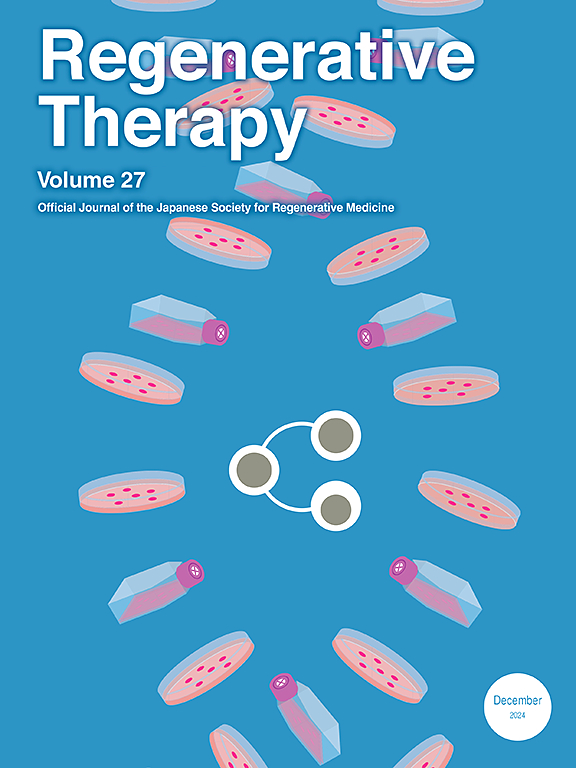用人工智能模拟上皮伤口愈合动力学:跨细胞类型的比较研究
IF 3.5
3区 环境科学与生态学
Q3 CELL & TISSUE ENGINEERING
引用次数: 0
摘要
皮肤伤口愈合表现出复杂的时空异质性,这对传统的静态评估方法提出了挑战。目前的人工智能(AI)方法通常将分割和时间建模视为断开的过程,限制了不同细胞类型愈合轨迹的动态量化。我们的目标是开发一个集成的AI框架,将增强分割与时间建模相结合,用于定量正常上皮细胞(MCF10A)和肿瘤细胞(MCF7)的体外伤口愈合动力学,并比较不同愈合表型的算法性能。方法采用基于Otsu阈值的改进UNet++模型对延时图像进行伤口分割。时间闭合轨迹采用多项式回归、随机森林(RF)、支持向量回归(SVR)、自回归综合移动平均(ARIMA)和时间卷积网络(TCN)建模。通过Dice/IoU(分割)和MAE/R2(时间建模)评估性能。结果与Otsu阈值法(Dice: p = 8.841 × 10−49;IoU: p = 3.931 × 10−47)相比,tsunet+ +的分割准确率显著提高,且在各愈合阶段具有一致的时间稳健性。对于闭合轨迹建模,RF对MCF7(平均绝对误差[MAE] = 0.48%, R2 = 0.968)和MCF10A (MAE = 1.73%, R2 = 0.872)具有较高的精度,在捕获非线性相变和平台行为方面表现出色。TCN显示MCF7突变(MAE = 1.67%, R2 = 0.698),但MCF10A接近平稳趋势失败。出现了显著的细胞类型差异,RF提供了最可解释的预测。结论:该集成框架能够实现精确的动态伤口监测,具有慢性溃疡管理和肿瘤边缘监测的临床潜力,特别是通过其识别细胞类型特异性愈合表型的能力。本文章由计算机程序翻译,如有差异,请以英文原文为准。
Modeling epithelial wound closure dynamics with AI: A comparative study across cell types
Background
Skin wound healing exhibits complex spatiotemporal heterogeneity that challenges traditional static assessment methods. Current artificial intelligence (AI) approaches often treat segmentation and temporal modeling as disconnected processes, limiting dynamic quantification of healing trajectories across distinct cell types. We aim to develop an integrated AI framework combining enhanced segmentation with temporal modeling for quantifying in vitro wound closure dynamics in normal epithelial (MCF10A) and tumor (MCF7) cells, and to compare algorithmic performance across healing phenotypes.
Methods
We implemented an enhanced UNet++ model for wound segmentation in time-lapse images, benchmarked against Otsu thresholding. Temporal closure trajectories were modeled using polynomial regression, Random Forest (RF), Support Vector Regression (SVR), Autoregressive Integrated Moving Average (ARIMA), and Temporal Convolutional Network (TCN). Performance was evaluated via Dice/IoU (segmentation) and MAE/R2 (temporal modeling).
Results
UNet++ achieved significantly higher segmentation accuracy than Otsu thresholding (Dice: p = 8.841 × 10−49; IoU: p = 3.931 × 10−47) with consistent temporal robustness across healing phases. For closure trajectory modeling, RF achieved superior accuracy for MCF7 (mean absolute error [MAE] = 0.48 %, R2 = 0.968) and MCF10A (MAE = 1.73 %, R2 = 0.872), excelling in capturing nonlinear phase transitions and plateau behaviors. TCN showed promise for abrupt changes in MCF7 (MAE = 1.67 %, R2 = 0.698) but failed for near-stationary MCF10A trends. Significant cell-type differences emerged, with RF providing the most interpretable predictions.
Conclusion
This integrated framework enables precise dynamic wound monitoring, holding clinical potential for chronic ulcer management and tumor margin surveillance, particularly through its ability to discern cell-type-specific healing phenotypes.
求助全文
通过发布文献求助,成功后即可免费获取论文全文。
去求助
来源期刊

Regenerative Therapy
Engineering-Biomedical Engineering
CiteScore
6.00
自引率
2.30%
发文量
106
审稿时长
49 days
期刊介绍:
Regenerative Therapy is the official peer-reviewed online journal of the Japanese Society for Regenerative Medicine.
Regenerative Therapy is a multidisciplinary journal that publishes original articles and reviews of basic research, clinical translation, industrial development, and regulatory issues focusing on stem cell biology, tissue engineering, and regenerative medicine.
 求助内容:
求助内容: 应助结果提醒方式:
应助结果提醒方式:


